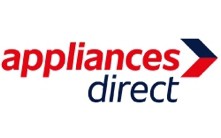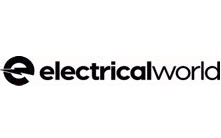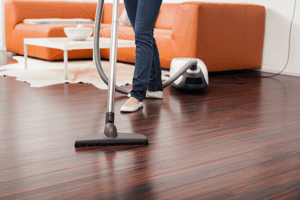 In the past, the vacuum cleaner market was so heavily dominated by one particular brand people didn’t even refer to the device as a vacuum. It was, of course, simply known as a ‘Hoover’ after the famous brand. Today, however, there are tons of different options, so if you’re unsure what’s out there, have a look at our guide below.
In the past, the vacuum cleaner market was so heavily dominated by one particular brand people didn’t even refer to the device as a vacuum. It was, of course, simply known as a ‘Hoover’ after the famous brand. Today, however, there are tons of different options, so if you’re unsure what’s out there, have a look at our guide below.
See Also: Small Kitchen Appliances | Home Appliances
Shops With Vacuum Cleaner Offers
Vacuum Cleaner Buying Guide
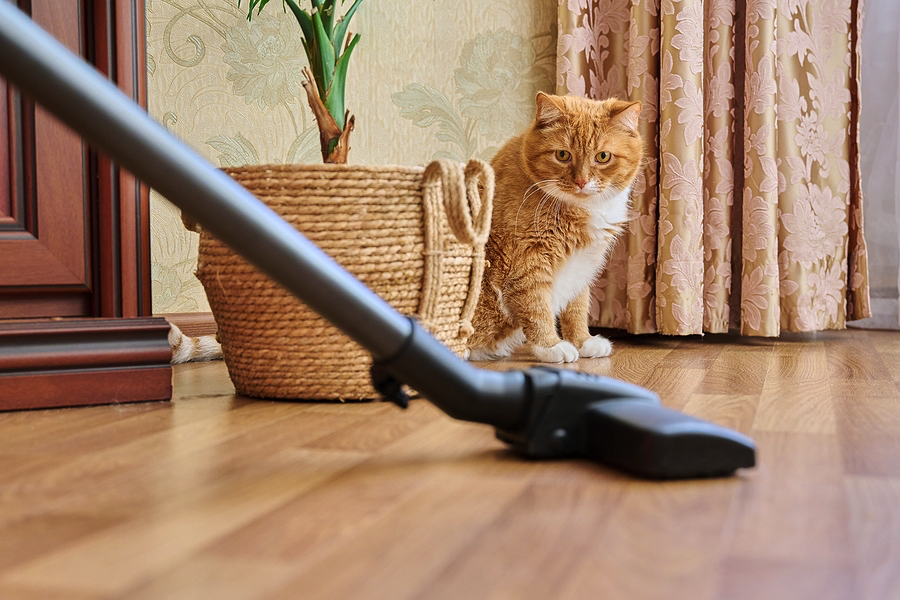
Since those olden days, the diversification of designers of vacuum cleaners has taken off exponentially with vacuums, such as Numatic’s Henry cleaner and Dyson’s Cinetic Big Ball, to have entered the market. The endless options these days almost becomes overwhelming.
This is exactly why we’ve written our buying guide, so that you can know what to think about when you go looking for your new vacuum cleaner. Upright or cylinder? Bagless or not? We’ve got the answers to your questions.
Upright Vacuum or Cylinder?
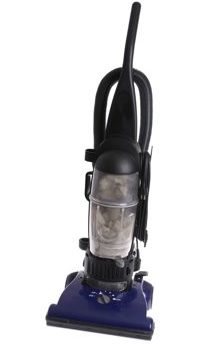 Modern vacuums essentially come in two different forms: cylinder vacuums and upright vacuums. On the face of it there doesn’t seem to be a huge amount of difference between the two, but if you live in a large house or are likely to do a lot of cleaning then choosing the right type could save you both stress and time.
Modern vacuums essentially come in two different forms: cylinder vacuums and upright vacuums. On the face of it there doesn’t seem to be a huge amount of difference between the two, but if you live in a large house or are likely to do a lot of cleaning then choosing the right type could save you both stress and time.
Upright Vacuum Cleaners
These are most suitable for large areas that need cleaning, such as carpets or rugs. They normally feature a brush, which runs over the rug and brings up any bits that need to be vacuumed up. T
hey are reasonably easy to control as they are in one unit, but on the flipside this obviously limits their flexibility. As there isn’t as far for the dirt to travel, the suction power of the device isn’t overly important, meaning wattage isn’t a critical feature.
Cylinder Vacuum Cleaners
These cleaners are more compact and, therefore, better suited to cleaning things like upholstery, stairs and furniture. They work by having an extendable tube that you use to do the cleaning, which makes them much more difficult to control than their upright counterparts.
They rely on suction power, which means they work best on hard floors, though the reverse to that is that they also need more wattage to work successfully.
How Do They Each Work?
Upright Vacuum Cleaners
These work by using a fan, normally located in the head of the vacuum. The fan then sucks dust and air up a tube and into a dust bag. The dirt then remains in the bag whilst the filtered air travels over the motor and out of the device. Upright cleaners work on suction power, but on top of this they also have belt-driven brushes which revolve, and what is known as an agitator beater bar that loosens the dirt before sweeping it up.
Cylinder Vacuum Cleaners
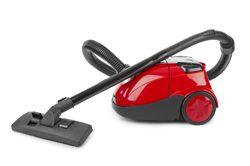 These work by using a motor that turns a fan that then sucks up dust and dirt from the head, through the hose and into the bag.
These work by using a motor that turns a fan that then sucks up dust and dirt from the head, through the hose and into the bag.
Because cylinder cleaners rely entirely on suction power, they are usually more powerful than upright cleaners, in that they have more wattage.
To Bag or Not to Bag
Modern vacuum cleaners have two types of internal mechanisms, bag and bagless. Bagged models are usually cheaper than the bagless types initially, but in the future you will have to order replacement bags that will add to the cost. The high-end models have self-sealing bags, ideal if you tend to make a mess when removing full bags or if you suffer from allergies.
The bagless models, however, are more expensive to buy in the first place, but you don’t have to fuss about with replacement bags, nor do you need to buy replacement bags, meaning your output later on is significantly less.
Bagless vacuum cleaners tend to be easier to empty and clean than their bagged counterparts, and some of the high-end models have an anti-bacterial coating that reduces their allergy content.
Does Your Flooring Matter?
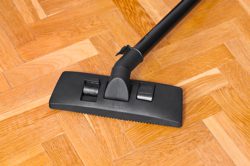 In short, the answer to this section is: Yes. In longer terms though, bear this in mind – if you have mostly vinyl, wooden or tiled flooring then a cylinder cleaning will almost certainly be the best option for you.
In short, the answer to this section is: Yes. In longer terms though, bear this in mind – if you have mostly vinyl, wooden or tiled flooring then a cylinder cleaning will almost certainly be the best option for you.
If, however, you have mostly carpet – especially of the cut pile variety – then you’re probably best off with an upright cleaner. Alternatively, you can look towards a cylinder cleaner that has a turbo brush attachment.
If your home or office has mostly loop pile carpets, you can really buy either type of vacuum cleaner. If it has a turbo roller attachment, then do be careful to turn it off or else it could flatten or damage the carpet.
Filtering Systems
All types of vacuum cleaner have some variety of filtering system, but some have specific ones designed for use in homes with pets or people with allergies.Stage filters normally have between 3 and 7 stages.
To give you an example, a standard 4-stage filter would have a double-skinned bag (this would be two of the stages), a filter between the dust bag and the vacuum’s motor chambers, and then a final filter section.
Lifetime filters: This refers not to the lifetime of the owner, unfortunately, but to the device itself. Vacuum cleaners can last between 7 to 10 years, so you wouldn’t need to change the filter during that time.
High Efficiency Particulate Air (HEPA): Also known as S-Class filters, truly are high-end filtered machines. These manage to keep in even the smallest allergy-causing particles. Ideal if you know anyone that suffers badly from an allergy related to cleaning. The final type of filter you can find is a charcoal filter. This has, as you’d expect, a charcoal filter, which is designed to get rid of any bad smells. Ideal if you have a pet.
Is It Energy Efficient?
Like with any electronic device you can find around the home, the energy efficiency of your vacuum is important if you’re hoping to keep your running costs down and so on. The EU has quite strict rules nowadays, so keep an eye out for your cleaner’s energy rating certificate so you know what you’re getting.
The regulations don’t count towards rechargeable, wet, dry or robot vacuum cleaners, so bear that in mind if you’re looking at any of those options. Vacuum cleaners are given a rating from A-G, which is worked out based on how efficiently they clean carpets and hard floors, as well as their dust emissions.
The vacuum cleaner’s energy efficiency certificate includes the following specifications: Overall energy efficiency, energy consumption (how much energy the device is assumed to use over a year), dust pick-up on carpets, dust pick-up on hard floors, dust re-emission (how clean is the exhaust air), and noise level.
Don’t Get Too Attached
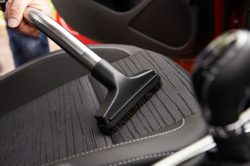 Most modern vacuum cleaners come with three different attachments: A crevice tool, an upholstery brush and a dusting brush. Some of the high-end machines might also offer an additional turbo brush, which tends to be powered separately in order to offer additional suction.
Most modern vacuum cleaners come with three different attachments: A crevice tool, an upholstery brush and a dusting brush. Some of the high-end machines might also offer an additional turbo brush, which tends to be powered separately in order to offer additional suction.
If you have wooden or tiled floors then it might be worth looking at a horsehair or parquet brush. Equally if you have hard to reach areas that need cleaning regularly then investigate whether the vacuum has an extendable tube.
Anything Else to Consider?
Bag capacity can be an important factor if you have a large house to clean, for example, and don’t want to have to constantly change the bag. Similarly a long cable will be important if you need to get around a large area without constantly unplugging and re-plugging your vacuum cleaner. Finally, the device’s weight will be a factor worth considering if you aren’t able to move around very easily or tend to climb stairs a lot with your vacuum cleaner.


